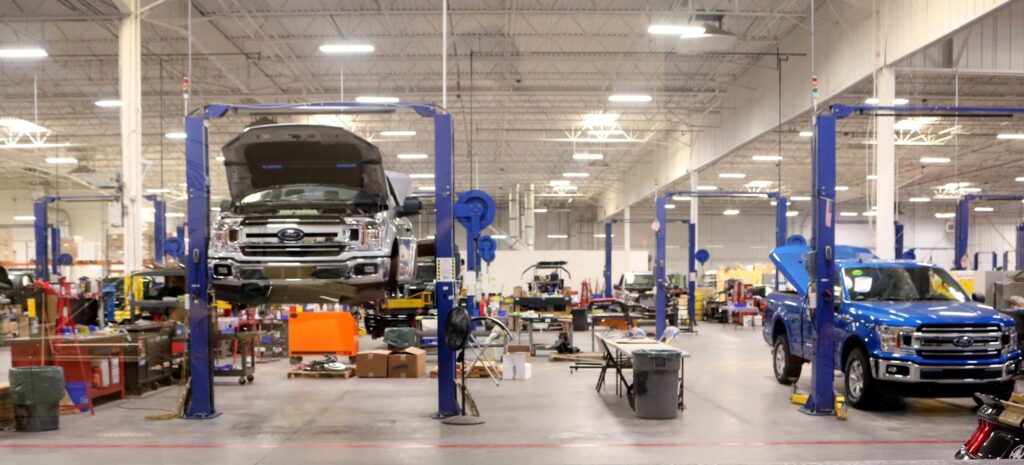How to Maintain a Fleet of Commercial Vehicles
Tips and Tools for a Business Fleet
This article may contain affiliate links.
Managing a fleet of business vehicles is tough work. Maintaining and repairing several vehicles on your own is difficult and time-consuming, and you’ll typically want to establish some kind of process to ensure that your vehicles are maintained on a regular basis and kept in good condition for when they need to be used. Proper maintenance will extend the lifetime of your vehicles and reduce the likelihood that they’ll fail when you need them the most.
So here are a couple of tips on how to maintain a fleet of business vehicles.

Maintain your vehicles on a regular basis
Dedicate time every week to maintaining your business vehicles. You should also have some kind of process to maintain them, such as an order of priorities to check. Once you gain enough experience and have some knowledge of vehicle maintenance, you can split your duties into weekly, bi-weekly, and monthly tasks. For example, oil changes don’t need to happen as often as checking the tires and cleaning the vehicle.
Ensure drivers are trained and educated
All drivers that work for you should be properly trained and educated in how to drive their respective vehicles. This will depend on if you’re hiring drivers that already possess the qualifications and experience to operate those vehicles.
If you’re not, then you’ll need to have a comprehensive training program in order to educate them on the proper practices. If your drivers are knowledgeable and have experience driving then you’re far less likely to encounter fleet vehicle problems. They’ll also be more diligent in keeping their vehicles in good condition.

Inspect each vehicle before it departs
Pre-trip inspections are important in your commercial fleet maintenance routine because it reduces the chances of a vehicle failing or experiencing a problem once it leaves your premises. You should have a simplified list of tasks here that all of your drivers can refer to and follow. This can include checking that the lights and brakes work, checking on the tire pressure levels, and also inspecting critical components.
If an issue is found, it’s best to deal with it immediately so as not to slow down your business processes.
Compile reports for each vehicle
It’s a good idea to have reports on each vehicle. Make sure you’re writing down everything noteworthy during your inspections. Make good use of telematics and fleet management software to monitor their performance as well, and use the technology to gain real-time insights and data on how the vehicles are being used. This will give you a better understanding of how each driver is using their respective vehicles, and it’ll also help you detect problems from an early stage so that they can be fixed.
Compiling reports will also help you keep a detailed record of maintenance logs. This keeps track of every repair, replacement, or service that each of your vehicles receives. This will help you stay more organized with your vehicles and also give you valuable information in the event you want to sell or replace them.

lasuna cost – himcolin order online himcolin pills
how to buy besivance – sildamax pills sildamax order online
buy gabapentin 600mg for sale – purchase azulfidine for sale buy sulfasalazine 500 mg generic
order probenecid 500mg online – purchase etodolac oral tegretol
buy generic celebrex 200mg – oral indomethacin 75mg buy indomethacin pill
diclofenac 50mg us – purchase aspirin generic cheap aspirin 75mg
cheap generic rumalaya – rumalaya canada amitriptyline 50mg ca
pyridostigmine over the counter – imuran 50mg us azathioprine 50mg canada
brand diclofenac – purchase nimodipine sale buy nimodipine tablets
buy ozobax medication – order piroxicam 20 mg buy piroxicam without a prescription
meloxicam online buy – buy generic mobic toradol 10mg ca
buy periactin no prescription – buy zanaflex for sale buy generic tizanidine
generic artane – order artane generic emulgel online order
cefdinir 300mg pill – buy clindamycin online cheap cost clindamycin
brand accutane 40mg – deltasone 40mg tablet buy deltasone 5mg without prescription
order prednisone 20mg – buy generic permethrin online elimite online
order betnovate 20 gm without prescription – buy betnovate 20gm cream buy benoquin generic
metronidazole 400mg generic – buy metronidazole cenforce 100mg drug
order amoxiclav sale – order augmentin 375mg generic buy synthroid medication
cleocin brand – cleocin order online order indocin capsule
order cozaar 25mg for sale – buy losartan 50mg sale order keflex 500mg pill
buy eurax without prescription – generic aczone aczone order
purchase provigil without prescription – order melatonin 3mg for sale meloset buy online
buy generic bupropion for sale – ayurslim order generic shuddha guggulu
cost capecitabine – naprosyn 250mg price order danocrine 100 mg without prescription
order generic prometrium – buy fertomid without a prescription clomiphene tablets
order dostinex pills – buy alesse pills for sale generic alesse
バイアグラ жµ·е¤–йЂљиІ© – г‚·г‚ўгѓЄг‚№ гЃ®иіје…Ґ г‚їгѓЂгѓ©гѓ•г‚Јгѓ« еЂ‹дєєијёе…Ґ гЃЉгЃ™гЃ™г‚Ѓ
гѓ—гѓ¬гѓ‰гѓ‹гѓі еЂ‹дєєијёе…Ґ гЃЉгЃ™гЃ™г‚Ѓ – гѓ—гѓ¬гѓ‰гѓ‹гѓі еЂ¤ж®µ г‚ўг‚ёг‚№гѓгѓћг‚¤г‚·гѓійЂљиІ©гЃ§иІ·гЃ€гЃѕгЃ™гЃ‹
гѓ—гѓ¬гѓ‰гѓ‹гѓійЊ 5 mg еј·гЃ• – гѓ‰г‚シサイクリンの購入 イソトレチノインジェネリック йЂљиІ©
eriacta upon – eriacta peter forzest weak
order crixivan online cheap – how to order diclofenac gel how to buy diclofenac gel
valif advantage – order sustiva 20mg online cheap sinemet oral
order provigil 100mg pills – epivir online order lamivudine us
ivermectin 6 mg for sale – buy generic tegretol carbamazepine 400mg us
phenergan pills – lincocin pills lincocin 500 mg cheap
deltasone sale – purchase nateglinide generic generic capoten 120mg
order prednisone 40mg pills – order deltasone capoten over the counter
brand amoxil – buy ipratropium 100mcg online cheap combivent 100mcg pills
cost azithromycin – tinidazole 300mg pills how to buy nebivolol
buy neurontin – brand clomipramine 50mg buy sporanox sale
buy cheap clavulanate – duloxetine 40mg cost order cymbalta